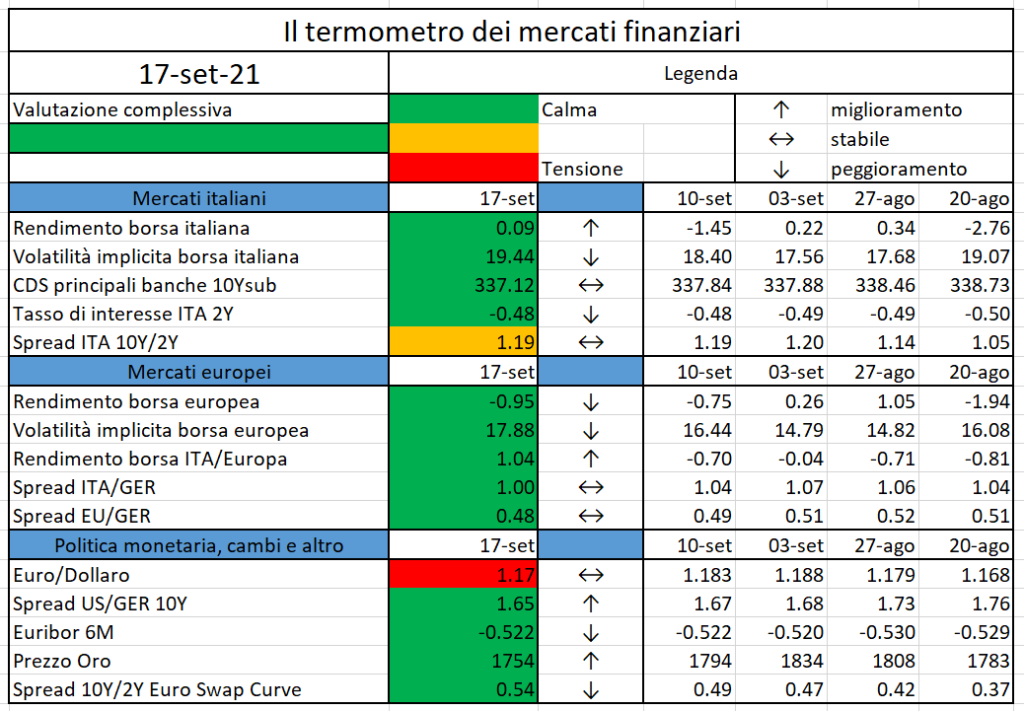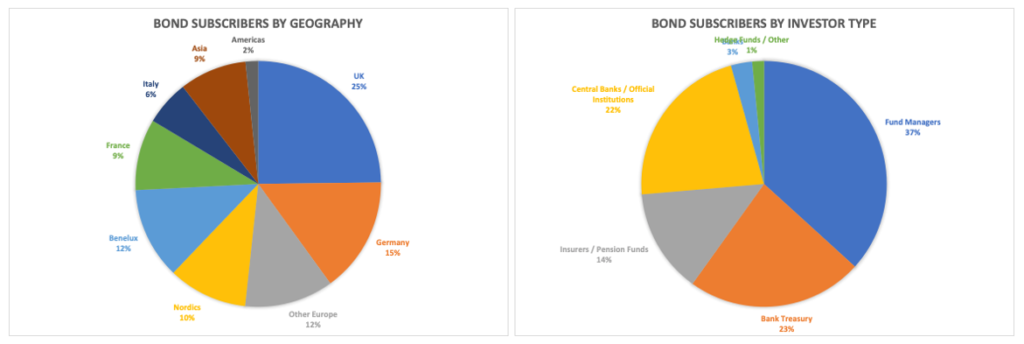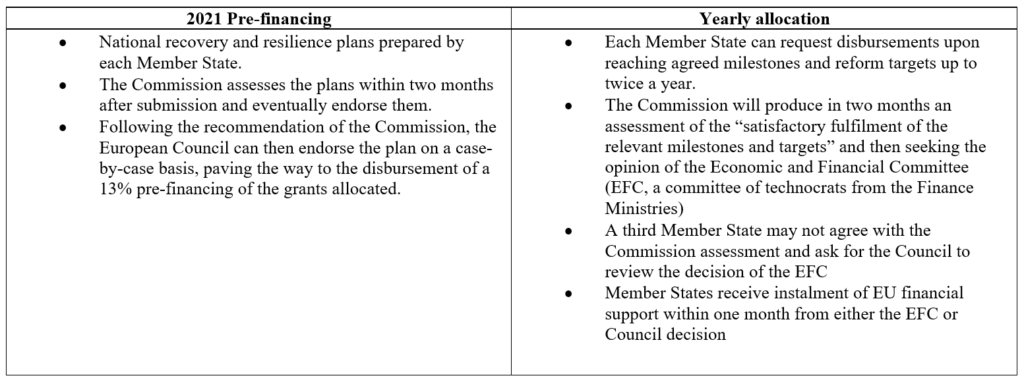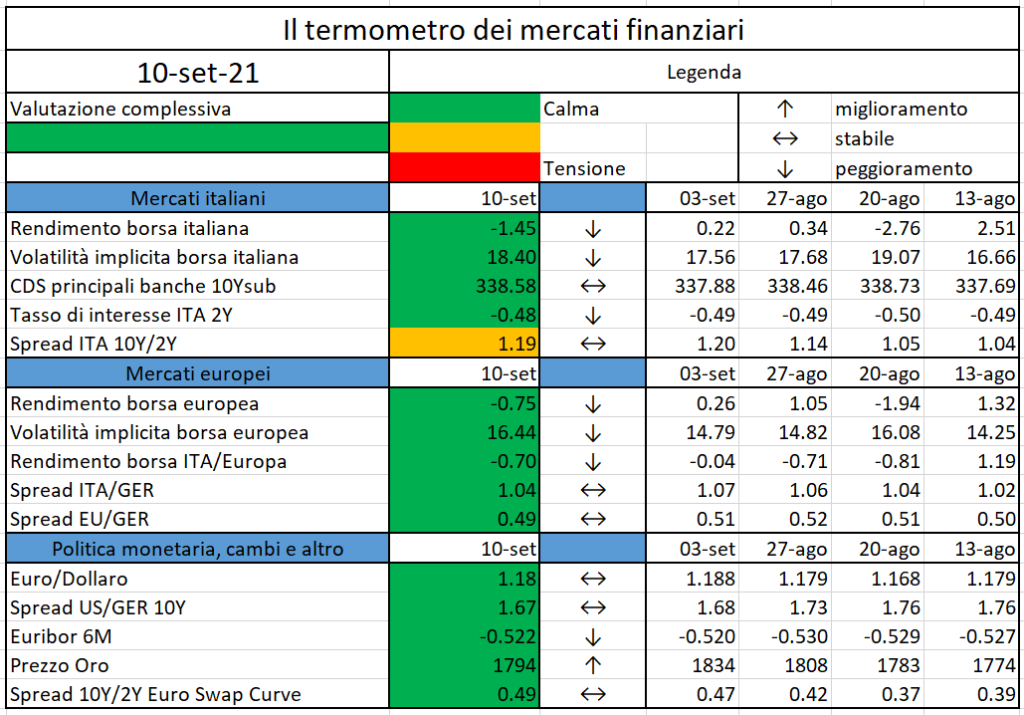The Chinese central bank is setting up a “coordination mechanism” with state agencies to continue battling crypto…
https://cointelegraph.com/news/chinese-regulators-unite-forces-to-crack-down-on-crypto
The Chinese central bank is setting up a “coordination mechanism” with state agencies to continue battling crypto…
https://cointelegraph.com/news/chinese-regulators-unite-forces-to-crack-down-on-crypto
It’s all about what happens to Bitcoin price action by the end of the week as $1,000 swings up and down remain…

L’iniziativa di Finriskalert.it “Il termometro dei mercati finanziari” vuole presentare un indicatore settimanale sul grado di turbolenza/tensione dei mercati finanziari, con particolare attenzione all’Italia.

Significato degli indicatori
I colori sono assegnati in un’ottica VaR: se il valore riportato è superiore (inferiore) al quantile al 15%, il colore utilizzato è l’arancione. Se il valore riportato è superiore (inferiore) al quantile al 5% il colore utilizzato è il rosso. La banda (verso l’alto o verso il basso) viene selezionata, a seconda dell’indicatore, nella direzione dell’instabilità del mercato. I quantili vengono ricostruiti prendendo la serie storica di un anno di osservazioni: ad esempio, un valore in una casella rossa significa che appartiene al 5% dei valori meno positivi riscontrati nell’ultimo anno. Per le prime tre voci della sezione “Politica Monetaria”, le bande per definire il colore sono simmetriche (valori in positivo e in negativo). I dati riportati provengono dal database Thomson Reuters. Infine, la tendenza mostra la dinamica in atto e viene rappresentata dalle frecce: ↑,↓, ↔ indicano rispettivamente miglioramento, peggioramento, stabilità rispetto alla rilevazione precedente.
Disclaimer: Le informazioni contenute in questa pagina sono esclusivamente a scopo informativo e per uso personale. Le informazioni possono essere modificate da finriskalert.it in qualsiasi momento e senza preavviso. Finriskalert.it non può fornire alcuna garanzia in merito all’affidabilità, completezza, esattezza ed attualità dei dati riportati e, pertanto, non assume alcuna responsabilità per qualsiasi danno legato all’uso, proprio o improprio delle informazioni contenute in questa pagina. I contenuti presenti in questa pagina non devono in alcun modo essere intesi come consigli finanziari, economici, giuridici, fiscali o di altra natura e nessuna decisione d’investimento o qualsiasi altra decisione deve essere presa unicamente sulla base di questi dati.

“This is more than a recovery plan. It is a once in a lifetime chance to emerge stronger from the pandemic, transform our economies, create opportunities and jobs for the Europe where we want to live. We have everything to make this happen”.
This is how Ursula von del Leyen, European Commission President, commented the political agreement at the July 2020 European Council that agreed on the guidelines around the NextGenerationEU (NGEU), the temporary €806.9m instrument designed to boost the recovery.
The NGEU is made of a number of different programmes, but its high level structure can be summarised as in the graph below:

The centrepiece of NGEU is the Recovery and Resilience Facility (RRF), an instrument for providing €723.8 billion to Member States to support reforms and investments to address the green and digital transitions with the aim of creating jobs and growth.
Part of the funds, €338.0bn, will be provided in form of grants. The remainder, €385.8bn, will be used to provide loans from the EU to individual Member States on favourable conditions, which will be repaid by those Member States.
The remaining components to the NGEU are totalling €83.1bn of grants and they include other centralised programmes like:
To finance the NGEU, the European Commission will borrow funds on the capital markets for up to around €800 billion between June 2021 and end-2026 for an average of roughly €150bn of new funding per year.
Such a significant amount of borrowing will make the European Union the biggest super-national debt issuer and as such it will require a step up of the debt management to a level comparable to the ones of big countries. For this reason, a diversified funding strategy has been defined which will make use of both long term EU-bonds (maturity greater than 3 years) and short term EU-bills (maturity below 1 year) issued either through syndication (i.e. the Commission works directly with a group of underwriters) or open market auctions.
The precise targets of such a diversified funding strategy will be defined through an annual borrowing decision and more detailed semi-annual funding plans.
On the 4th of June 2021 the Commission published the first funding plan for the NGEU. The main points of the plan are the following:
In the table below we can see that €45bn (slightly more than 50%) have been already issued between June and July 2021 thanks to very successful syndicated transactions (weighted average bid-to-ask ratio around 10)

The level of yields offered justifies the public interest into these issuances: they in fact offer a material spread over the Bund yield for a AAA counterparty like the European Commission is.
Requests have been received mostly from UK and Europe and from banks and fund managers, as we show in the pie charts below that look at the notional issued weighted average information for the four transactions above.

The RRF funding are distributed according to a very precise process which can be divided in two macro stages:

As of the end of August, we can notice a quite scattered and diversified status among different Member States:

Some details are still not publicly available, like whether the prepayment of the loan part has been disbursed as an actual loan and what the characteristics of such an eventual loan would be.
When we analysed the SURE program in a previous article we calculated the amounts saved by each Member State comparing the yields of the back-to-back loans with the level of public debt available on the secondary market for the same maturity.
An exact comparison is much more difficult because the information on the Commission to Member States loans are still not public and because the grants component doesn’t allow to have an equivalent funding strategy to compare with. To calculate an estimate of the financial impact from receiving the 1st tranche we will hence assume that:
Based on these two assumptions we calculated an “equivalent coupon” at which each country would finance on the market. The results of the analysis are in the following table:

A few comments on the results:
From this analysis it looks like the NGEU is starting to deliver on the many promises were made in 2020: it is in fact proving to be a pragmatic way for the European Commission to force Member States to budget for long needed reforms and investments while financially supporting them, especially those paying the highest level of interest on sovereign debt not penalising the core ones at the same time.
Il tema della bankinsurance è da tempo al centro dell’attenzione dell’Istituto anche perché è rappresentativo di un legame che, in Italia, è presente nella stessa governance di IVASS, dove troviamo integrata, dopo la riforma del 2012, la Vigilanza assicurativa nella Vigilanza bancaria…
Nell’ipotesi di società che detengono partecipazioni in compagini operative, la mancanza di reddito derivante dalla volontà della partecipata di non distribuire i dividendi si configura come situazione oggettiva non imputabile alla contribuente, situazione che impedisce il conseguimento dei ricavi…
PayPal’s Bitcoin trading services are now fully available in the United Kingdom after the global payment giant began rolling out services last month…
https://cointelegraph.com/news/paypal-completes-crypto-trading-rollout-for-uk-customers
Despite the popularity of the Ethereum blockchain, several developers believe the blockchain network is slowly becoming outdated as more and more projects shift their bases to alternative blockchain networks…
https://www.newsbtc.com/news/company/why-projects-are-switching-to-the-binance-smart-chain/

Contract boundaries determine the premiums and obligations that belong to the contract, considering rights and risks for the undertakings. While carrying out the revision process of SII during 2020, EIOPA realized that insurers and supervisors are adopting several divergent practices regarding their concept, the unbundling, and the discernible effect. EIOPA aims at fixing this lack of convergence by introducing new guidelines and by amending the existing ones, that lack of clarity.
For this reason, last 11 June 2021 EIOPA published a consultation paper on the revision of the guidelines on contract boundaries, together with an information request to assess the ensuing quantitative impacts. Although EIOPA has already conducted an initial analysis of costs and benefits, it believes that additional data is needed to properly measure the impact of the proposals. Comments under the form of a survey shall be answered by next 12th of November 2021. The contributions received and a Final Report will be made available at the end of the public consultation period; EIOPA will then submit the Guidelines for adoption by its Board of Supervisors.
These are the Guidelines suggested
contract boundaries should not be considered as a single point in time, but rather as a boundary between premiums and obligations that do or do not belong to the contract. In most of the cases, they belong to the contract, as they reflect the right to keep the premium and the obligation to cover the risk for the undertaking, while just under very specific circumstances they do not, as for instance in contracts that can be cancelled by either party during a limited period.
undertakings should assess whether it is possible to unbundle a contract at recognition date and check if it that is still the case at each following valuation date. When a contract is considered “insurance”, all the unbundled parts are “insurance” too. A contract can be unbundled if and only if two (or more) parts of it are equivalent in terms of risk to two (or more) contracts that could be sold separately. The unbundling is not possible in case of material (inter)dependency, but it must be applied otherwise. It follows that a UL contract with a death benefit guarantee that covers the maximum between a fixed amount (sum insured) and the value of the fund cannot be unbundled, as the mortality risk depends on the UL fund, while a contract with two parts (general account and UL), where the policyholder chooses the percentage of premium allocated to each part, shall be unbundled, as it shows a dependency at the level of premium only, without any discernible difference in terms of insurance or financial risk.
The revised guidance (unbundling when the parts of the contract could be sold separately) is simpler to implement compared to the existing one, requiring the unbundling in fewer cases. It is also closer to IFRS17, which considers contracts as units, not requiring the unbundling of insurance obligations. Contracts unbundled / not unbundled under this approach that were previously not unbundled / unbundled should lead to a decrease/ increase in the OF (Own Funds) of the undertakings. The application of the revised guidance is not expected to have a material impact, being consistent with the approach currently followed in most of the jurisdictions.
Whereases, the correct application of the existing guidance (unbundling when the cash flows of the contract can be allocated to each part of the contract) could have a material impact on the market, leading to unbundle several products that are currently not unbundled. It would also lead in some cases to the unbundling of cash flows that shall not be unbundled, as they cannot exist separately. An example is given by contracts where both parts always lapse at the same time: different contract boundaries for each part would turn into different durations for the projections. Besides, it could make the allocation of expenses to each part of the contract harder than it should be. By using the data provided in the QRTs, EIOPA has already derived a rough estimate of a maximum impact in terms of OF (Own Funds): unbundling a UL product is expected to shorter its duration and reduce its profit; the impact has been guessed by looking at the ratios EPIFP / TP of jurisdiction with shorter contract boundaries. The reduction in OF is expected to vary from less than 5% (in most of the Member States) up to 20%.
a financial guarantee / coverage has a discernible effect on the economics of a contract only when linked to the payment of future premiums, providing the policyholder with a discernible financial advantage. The assessment, that can be either qualitative or quantitative (still the supervisory authorities may require the quantitative one), should compare the present value of the expected cash flows of the contract with and without the financial guarantee / coverage and should appraise when the difference is discernible. The analysis should be made at product level when contract specific features, such as the age of the policyholder, play a role. A stochastic valuation is necessary to properly consider the time value of the option: 0.5% over the value of all future obligations is not considered to be discernible, while 2.0% is. For what concerns the qualitive assessment, consideration on the moneyness of the financial guarantee can be made, such as comparisons between the sum insured for the cover can and the principal of the contract or the price of the cover and the annual investment management fees charged to the policyholder.
Guideline 6c – Reassessment of the discernible effect of a cover or financial guarantee [new]
contract boundaries are expected to remain constant, however, changes in the contract terms or the relevant external environment that may affect contract boundaries should trigger a reassessment. Obviously, to ensure coherency in the evaluation, contract boundaries should remain constant through all the scenarios of the stochastic valuation, as well as in the stressed scenarios adopted for the SCR calculation. In case they needed to be reviewed, the undertaking should report the material change to the supervisory authority and include it in the annual report, with a detailed description of the reassessment and its impact on the solvency position. Two give two examples: a financial guarantee that affects all the premiums of the contract as a whole (e.g. terminal bonus) shall not be reassessed, while a financial guarantee that is independent for each premium (e.g. a guaranteed annual interest rate where the guarantee starts with each premium paid) shall be.
Reference:
“Consultation paper on the revision of the guidelines on contract boundaries”, EIOPA-BoS-21/301, 11/06/2021

L’iniziativa di Finriskalert.it “Il termometro dei mercati finanziari” vuole presentare un indicatore settimanale sul grado di turbolenza/tensione dei mercati finanziari, con particolare attenzione all’Italia.

Significato degli indicatori
I colori sono assegnati in un’ottica VaR: se il valore riportato è superiore (inferiore) al quantile al 15%, il colore utilizzato è l’arancione. Se il valore riportato è superiore (inferiore) al quantile al 5% il colore utilizzato è il rosso. La banda (verso l’alto o verso il basso) viene selezionata, a seconda dell’indicatore, nella direzione dell’instabilità del mercato. I quantili vengono ricostruiti prendendo la serie storica di un anno di osservazioni: ad esempio, un valore in una casella rossa significa che appartiene al 5% dei valori meno positivi riscontrati nell’ultimo anno. Per le prime tre voci della sezione “Politica Monetaria”, le bande per definire il colore sono simmetriche (valori in positivo e in negativo). I dati riportati provengono dal database Thomson Reuters. Infine, la tendenza mostra la dinamica in atto e viene rappresentata dalle frecce: ↑,↓, ↔ indicano rispettivamente miglioramento, peggioramento, stabilità rispetto alla rilevazione precedente.
Disclaimer: Le informazioni contenute in questa pagina sono esclusivamente a scopo informativo e per uso personale. Le informazioni possono essere modificate da finriskalert.it in qualsiasi momento e senza preavviso. Finriskalert.it non può fornire alcuna garanzia in merito all’affidabilità, completezza, esattezza ed attualità dei dati riportati e, pertanto, non assume alcuna responsabilità per qualsiasi danno legato all’uso, proprio o improprio delle informazioni contenute in questa pagina. I contenuti presenti in questa pagina non devono in alcun modo essere intesi come consigli finanziari, economici, giuridici, fiscali o di altra natura e nessuna decisione d’investimento o qualsiasi altra decisione deve essere presa unicamente sulla base di questi dati.